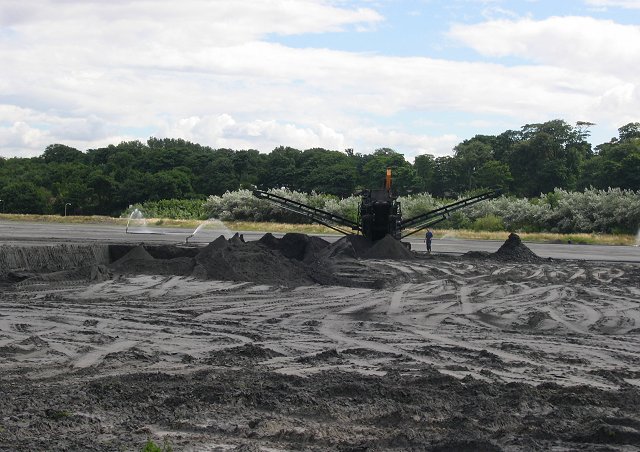
Scientists at the Illinois Sustainable Technology Center (ISTC) are beginning a $1 million, two-year project to find new and value-added uses for fly ash, a powdery remnant of burning coal. Confining the ash in vegetable oil will potentially reduce the amount of fly ash waste and lessen the risk of heavy metals from waste piles leaching into surface and groundwater.
Although fly ash is used in concrete, construction materials, and other products, a significant amount is stored in ash ponds and sent to landfills. Fly ash contains arsenic, lead, mercury, and other harmful chemicals, posing human health and environmental risks when rainwater causes contaminants to leach underground.
“Our biggest motivation for the project is to investigate new, beneficial uses of fly ash, particularly in encapsulating ash into vegetable oils, to help eliminate exposure of heavy metals to the environment,” said BK Sharma, principal investigator of the project.
In this new approach, the scientists will use their expertise in modifying vegetable oils to coat fly ash particles with oil so that the contaminants are fully contained. The challenge will be identifying the appropriate vegetable oil and the right operating conditions to ensure a uniform coating, according to Sriraam Chandrasekaran, co-principal investigator.
The smallest fly ash particles contain the highest concentration of toxic elements. The project targets removing these fine fractions to reduce contamination while also developing a marketable product for commercial use.
“Because of their small size, the ash particles are ideally suited for use as fillers in plastics,” Chandrasekaran said. “The project will not only provide a value-added coated fly ash product but will also help us identify ways to use other fractions in different applications.”
When fly ash is used in concrete and other materials, its economic value is particularly low. So, it’s not economical to transport the material from power plants to other states or regions.
If ISTC scientists can develop a new technology to develop fillers and toughening agents in products for a booming market—in this case, estimated to be $10 billion a year in the U.S.—the vegetable oil encapsulated fly ash will command a much higher price than unmodified fly ash while also increasing beneficial uses, Sharma said.
In addition, a successful project will make transporting fly ash long distances more economically feasible, provide incentives to develop technologies to size and store fly ash, and create non-seasonal product demand.
The ISTC team is partnering with The Ohio State University, where scientists will investigate the use of coated fly ash materials to replace carbon black filler materials in rubber, particularly for use in tires. Funding is provided by the U.S. Department of Energy.
—-
Media contacts: BK Sharma, 217-265-6810, bksharma@illinois.edu, Sriraam Chandrasekaran, 217-300-1477, schandr@illinois.edu; news@prairie.illinois.edu

